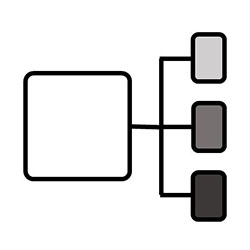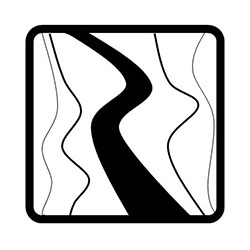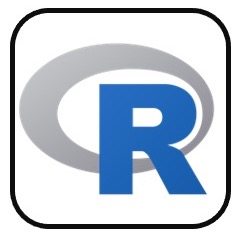Learning Modules
About these Modules
The modules below were developed under and funded by the National Science Foundation’s Tribal Colleges and Universities Program (award #1641310), and are freely available for download and use by Tribal Colleges and Universities, Alaska Native-serving institutions, and Native Hawaiian-serving institutions in order to promote high-quality science, technology, engineering and mathematics (STEM) education, research, and outreach.
To use these modules, click on the links below to download the associated documents and datasets. These are available in several formats for ease of use.

Description:
This module surveys the practice of applying the SFM and MVS techniques to process multiple aerial photographs into an orthomosaic, which can be subsequently used as a map or used to create a three dimensional surface model. Topics covered include stereo vision, relief displacement, aerial triangulation, and SfM-MVS.
Module 2
Geometric Rectification

Description:
This module covers the steps involved in correcting the planimetric positioning of features within satellite imagery as a necessary pre-processing step for later analysis. Topics covered include image-to-map rectification, image-to-image rectification, ground control points, and interpolation methods.

Description:
This module explores the process of identifying and categorizing land cover types in a satellite image using a computer algorithm calibrated upon a large base of pre-defined training data. This is followed by an investigation of various accuracy assessments associated with this classification method.

Description:
This module explores the process of identifying and categorizing land cover types in a satellite image using an image clustering algorithm that requires with limited human input. In addition, an investigation of various accuracy assessments associated with this classification method is provided.
Module 5
AQUARIUS Time Series Software

Description:
This module explores the use of the AQUARIUS software to model changes in hydrological parameters over time. Topics covered include types and components of a hydrological time series, data correction practices, and data analysis and statistics.

Description:
This module covers aspects of hydrodynamic modelling, including the process underlying the mapping of floodplain inundation due to peak flows. To do this it focusses on the use of the GIS extension HEC-GeoRAS (Hydrologic Engineering Center- River Analysis System, developed by US Army Corps of Engineers).

Description:
This module provides a basic overview of R, a statistical and graphics computing language, for image processing functions using the integrated development environment RStudio. No prior coding experience is required, but users will need to download both R and RStudio, both of which are open source and available at no cost.
IMPORTANT NOTE: The download materials below include only the lecture and lab manual. Additional data are required to complete the lab, which may be found here.
